Tiaks (single poles) Part 1
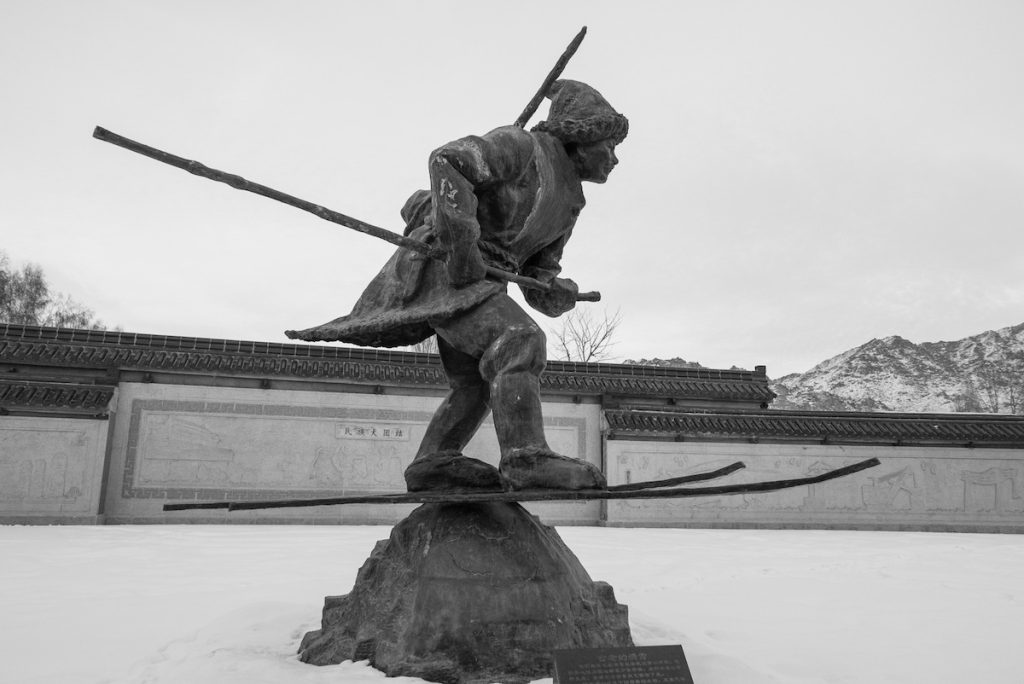
Tiak [tīăk] means stick in the local languages in the Altai Mountains of North Central Asia. Tiak is also the name for the single pole used in all the traditional skiing in that region. Prior to 1900, the single pole was used by pretty much all skiers in the world!
Hoks in the School
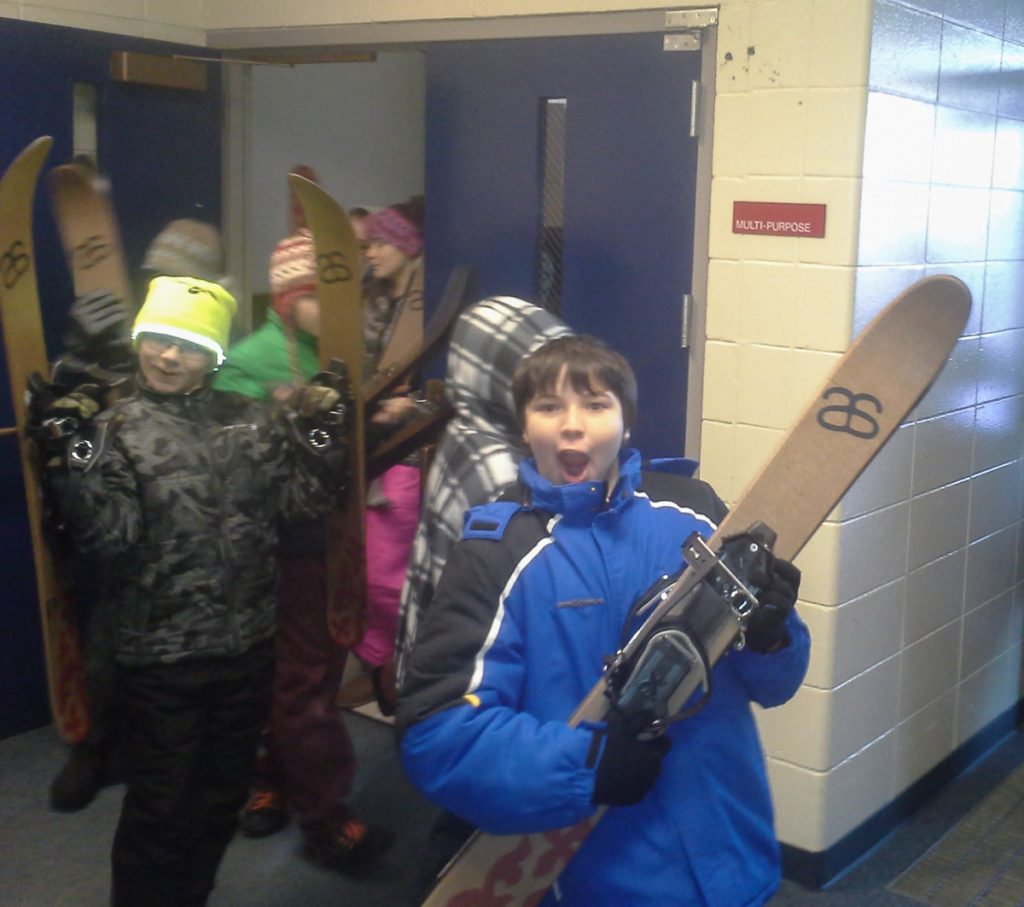
Eliminating Nature Deficit Disorder! 🙂 Last year we started getting requests from schools for Hoks so the kids could go skishoeing around their school grounds (yes, some people are lucky enough to live where they can do that from school).
100 Days of Hoks Skiing
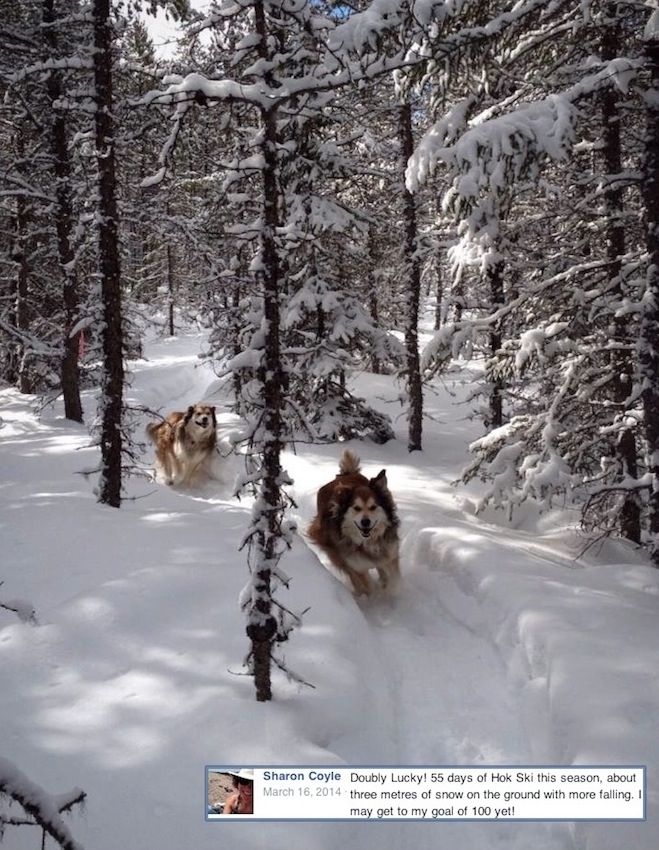
100 Days of Hok Skiing by Sharon Coyle It was an almost impossible objective, even in a town north of the 50th parallel where the snow lasts until May: 100 Days of Hok skiing in one winter season. What the heck, if I didn’t make it to one hundred, at least I would keep count and try to beat that number the next year. I ordered my Hok Skis online from Altai Skis in October, and in spite of living in a relatively remote region where even ordinary letters sometimes take a mysterious length of time to arrive, the trim box appeared at my door within a couple weeks. I learned about these short, wide skis when a friend at work lent me some to try. I liked the smooth movement, it was easier on the knees than snowshoes, and with a dog to be walked and endless forest riddled with paths just outside my backdoor, I was ready to strap my universal bindings over my Merrell snowshoe boots and go! There is a groomed cross-country ski trail in our woods, but dogs are not welcomed, so I was happy to have the Hok skis because they made it easy to make my own path. Sometimes I followed the narrow trails where the snow had been packed down by snowshoes or snowmobiles. Sometimes I made my own path through the forest in deep powder until the dog got too exhausted from swimming in snow up to his chin; then we would return to follow the more solid snow paths.
Tracking cougars in Yellowstone
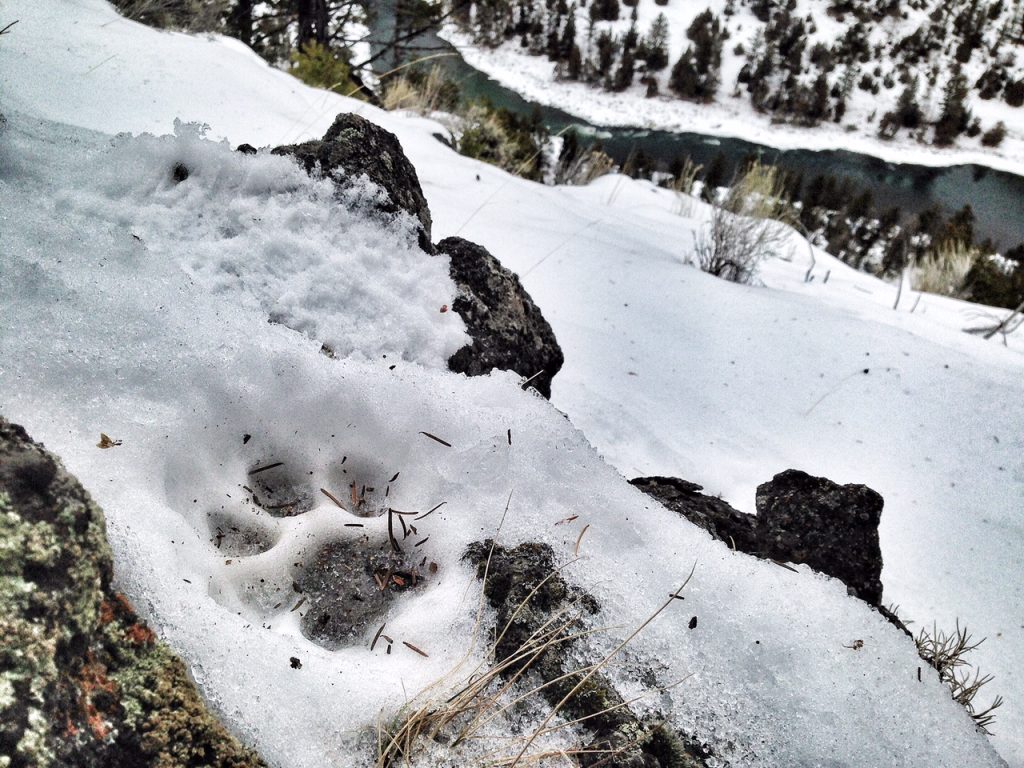
The National Park Service’s Yellowstone Cougar Project embraced the Hok skis for their winter field work studying Yellowstone’s most elusive large carnivore. Biologists have been conducting intensive snow-tracking surveys in Yellowstone’s rugged winter terrain to detect cougar tracks and follow them through common travel routes to bed sites, scent marking sites, and prey remains.
Great Video from Ontario!
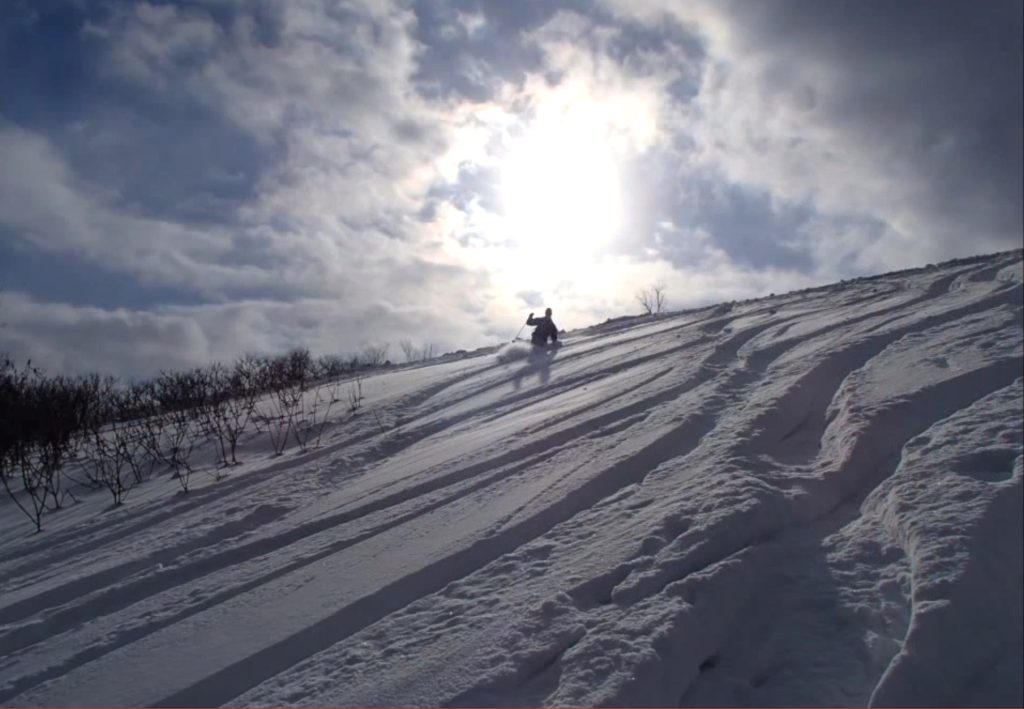
Andrew Morrisey and his friends really captured the backyard backcountry aspect of skishoes. They are having lots of fun close to home. A big thanks to these guys as this is a lot of time involved in making a video like this.
